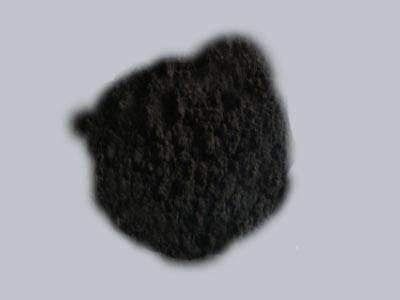- response@vineethchemicals.com
- +91-8149095778 | 8149095779
Palladium on Activated Charcoal(Carbon)
- Our Pro...
- Precious Metal Catalysts
- Palladium on Activated Charcoal(Carbon)
Palladium on Activated Charcoal(Carbon)
Pd Content: 1%, 2%, 2.5%, 3%, 5%, 10% etc.
DRY or 50% L.O. D

CAS No. 7440-05-3
Palladium on Activated Charcoal is also known as Palladium on Carbon (Pd on C) is a mild hydrogenation catalyst. It is generally a catalyst of choice when the functional group to be hydrogenated is a part of a molecule which has also got some other functional group capable of getting hydrogenated. It is also a catalyst of choice for getting a specific type of isomer. It is, therefore, a catalyst for selective hydrogenation. Further, it can also be safely used where the reaction conditions are acidic, viz. where acetic acid is a solvent or dilute sulphuric acid or dil hydro chlorine ip additive.
Vineeth Chemicals, Vasai, makes two standard grades of Palladium on Carbon. Different grades are made for attaining better yield and efficiency with a different type of reactions. Below in table different grades of Palladium on Carbon Catalysts and their typical applications. These two grades can meet requirements for all types of hydrogenation reactions where palladium on carbon is recommended catalyst. Whereas Grade 390 Z is less powerful but more stable, Grade 390 V is very powerful but has a short shelf life.
In each of these two grades, palladium loading can be made as per customer’s requirements. For reasons of economy, it is quiet customary to use the same catalyst for more than one cycle of hydrogenation before it is sent to the manufacturer for recovery of palladium metal for an eventual reformulation of fresh catalyst. However, if the nature of the reactants and the end products are such that the catalyst gets deactivated or poisoned after one cycle only, it is advisable to opt for lower palladium loading viz. 1% or 2% instead of standard 5% or 10%.
Palladium on Carbon Catalysts, especially when Palladium loading is high, are usually supplied in Wet Form, i.e with 50% water because of pyrophoric nature of dry powder in the environment of Hydrogen. Catalyst powder in dry form is however used when the presence of water is totally undesirable.
A reference table annexed herewith shows which grade is more suitable for a particular type of reaction. The recommendation given in the table should, however, be taken as a suggestive one and not an ultimate one.
Certificate of Analysis (COA) is made available to all the customers irrespective of quantum of supply. Material safety information, technical specification and test methods however are supplied against specific request.
Grades of Palladium on Activated Charcoal
| Grades | Palladium Content | Typical Application |
| 300 Z |
|
|
| 300 V |
|
|
| 390 Z |
|
|
| 390 V |
|
|
| 153 V |
|
|
Shelf Life
The assured shelf life of the product is one year from the date of manufacture with retest period of six months.
Packing
Standard packing is 1 kg, 2 kg and 5 kg in wet or dry form as per customer’s requirement.
Note :
- Different Grade Nos of Catalyst are on account of different grades of activated charcoal used and different techniques adopted at the time of making of the catalyst.
- All the above catalysts can also be supplied in wet form with 50% water
Recommended Application :
Hydrogenation of alkene to alkane, aldehyde / ketone to alcohol, nitro compound to amino compound, oxime to amine etc.


